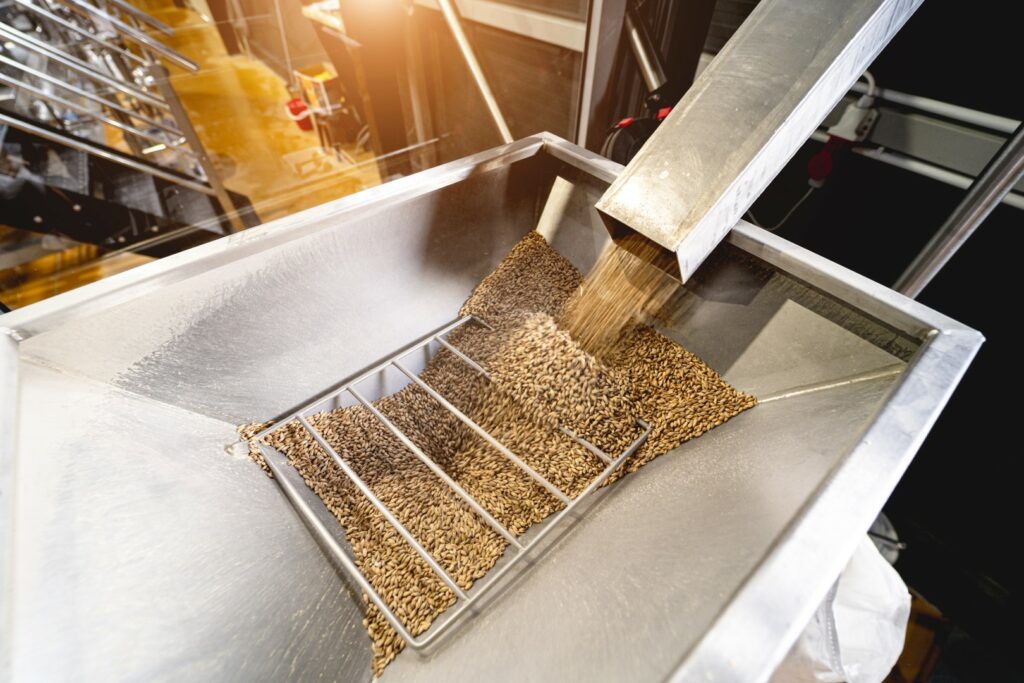
Brewstilleries Mill Guide: The Convergence of Brewing and Distilling
With the ever-evolving consumer trends and the challenges faced by the brewing industry, breweries are venturing into new territory by tapping into the world of distillation.
This convergence of brewing and distilling has given rise to a new term–brewstillery.
This innovative approach not only diversifies the offerings of breweries–which can help them stay competitive and relevant in a changing industry–but also leverages the growing consumer interest in ready-to-drink cocktails.
Let’s delve into the details of how breweries are venturing into distilling, and the intricacies involved in this process, as well as how RMS Roller-Grinder can help you configure your machine for switching between brewing and distilling.
Brewing and Distilling: A Similar Path
 The process and equipment involved in brewing and distilling share a striking similarity up to a certain point. Both processes involve the transformation of grains—such as barley, wheat, and rye—into a liquid form, but the end products drastically differ.
The process and equipment involved in brewing and distilling share a striking similarity up to a certain point. Both processes involve the transformation of grains—such as barley, wheat, and rye—into a liquid form, but the end products drastically differ.
Both brewing and distilling require fermentation, but distilling requires the extra steps of distillation and often aging to create spirits and a stronger alcohol content.
While brewing primarily results in beer, distilling produces spirits such as whiskey, vodka, and gin. This transition from brewing to distilling is not only an evolution for breweries but also a strategic move to adapt to the changing market dynamics.
Diversification Amid Industry Challenges
The brewing industry has recently encountered a slowing growth rate, which is due in part to greater customer interest in spirits. In fact, the sale of spirits has actually outpaced that of beer for the last two years. This has prompted breweries to seek alternative ways to sustain and expand their business, which includes branching out into distilling.
By incorporating distillation into their operations, breweries can expand their product offerings, attract a new consumer base, and capitalize on the increasing demand for spirits and ready-to-drink cocktails. The brewstillery model isn’t just a trend, but a progressive response to the shifting landscape of the beverage industry and its consumers.
Brewery Mills vs. Distillery Mills: Understanding the Variance
 Although breweries and distilleries use similar raw ingredients–including corn, rye, and barley–one of the key differences lies in the milling process used to break down these raw materials.
Although breweries and distilleries use similar raw ingredients–including corn, rye, and barley–one of the key differences lies in the milling process used to break down these raw materials.
In brewing, the focus is on crushing the grains, where the rolls of the mill are spinning at the same speeds to break down the grains into a coarse consistency. In distilling, the emphasis shifts to grinding the grains for a finer texture, which requires one roll of the mill to spin faster than the other.
This variance in the milling process is essential to achieve the desired texture for the grains, facilitating the subsequent distillation process.
Whether you want to create distilled spirits or handcrafted beer, it is possible for breweries and distilleries to combine their operations to create a wide variety of products as a brewstillery with the right equipment and configurations.
Beer Distillery Equipment: Setting Up Your Mill for Different Processes With RMS
Adapting to the different milling requirements of brewing and distilling demands a thoughtful approach, particularly in setting up the mill for different processes.
 RMS Roller-Grinder is uniquely positioned to help breweries configure their milling equipment to accommodate both brewing and distilling processes effectively. We even offer machinery that can switch back and forth between the brewing and distilling configurations. Currently, this is the only machine on the market that is specifically designed and optimized for both high quality brewer’s crush as well as distiller’s grind.
RMS Roller-Grinder is uniquely positioned to help breweries configure their milling equipment to accommodate both brewing and distilling processes effectively. We even offer machinery that can switch back and forth between the brewing and distilling configurations. Currently, this is the only machine on the market that is specifically designed and optimized for both high quality brewer’s crush as well as distiller’s grind.
Our team ensures the milling machine is set up for optimal performance to meet the specific demands of each process, enabling breweries to seamlessly transition into distillation without compromising the quality and consistency of their end products.
This not only helps companies meet their goals of both brewing and distilling under one roof–it also helps maximize your investment into the machinery you need for proper grain crushing.
Request a Quote With Us
It’s possible to effectively navigate business as a brewstillery and unlock new opportunities for growth and innovation. When you dream of serving a variety of beers along with amazing spirits, discover how our crushing machinery can help you get there. Contact RMS Roller-Grinder today to request a quote!
